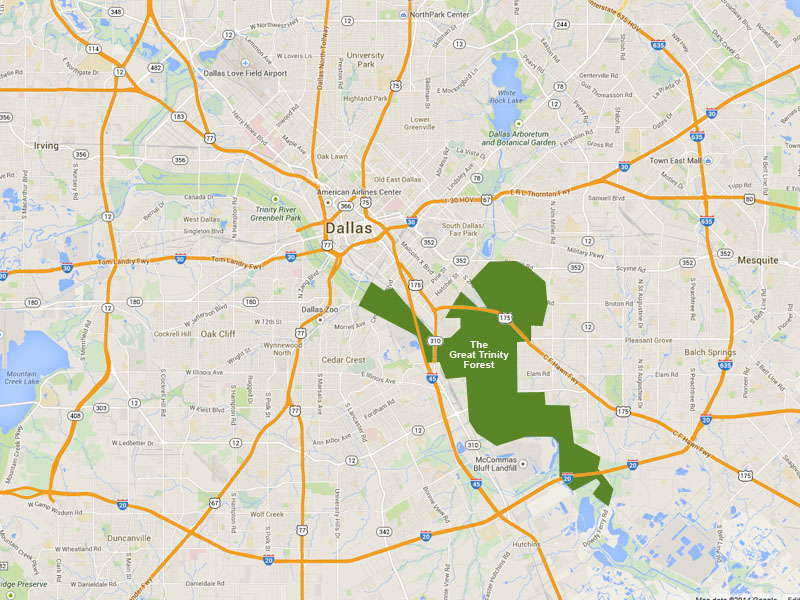
Click to Enlarge
Several years ago I ran a long term trail camera survey in Dallas’ Great Trinity Forest. The objective of that project was to explore the possibility of Coydogs (Coyote-Dog hybrids) living in the park.
The part of Dallas County where I conducted the survey is notorious for dog dumping, resulting in an unfortunate abundance of free ranging stray dogs. In addition, the Great Trinity Forest boasts a healthy population of Coyotes, and a large area of secluded Trinity River bottomlands. There have even been reports of dogs and Coyotes running together in the park. If there was ever a place primed to produce urban Dog-Coyote hybrids, this would be it.
The results of that trail camera survey were compelling–if not absolutely definitive. If you would like to learn more, you can read the resulting writeup by following the link below…
ARTICLE: The Painted Coyote
Over the course of the Coydog project I recorded hundreds of trail camera pictures–the vast majority of which were of animals other than Coyotes. The Great Trinity Forest is home to a full array of North Texas wildlife species, and this trail camera project proved it out, beyond a doubt.
ARTICLE: What is the Great Trinity Forest
I set my camera traps in the Joppa Preserve just a short 6.5 miles from downtown Dallas. I used four trail cameras in this project, and placed them in various locations around the dried bed of what was once Lemmon Lake. The cameras ran for around seven months, and they diligently recorded photographs through cold weather and warm, through floods, and through droughts.
ARTICLE: Losing Lemmon Lake
ARTICLE: Lemmon Lake Lives… And Dies

Click to Enlarge
My trail cameras snapped shots of all the unusual suspects–as expected. Most species of North Texas mammals and birds can be found anywhere there is habitat that is even remotely suitable, and the Great Trinity Forest in Dallas County provides good habitat in spades. But I also captured a collection pictures documenting a few less common and less frequently encountered species. Browsing through these photographed recently, I realized I had the makings for another edition of our This Place in the Woods series–this time set in the very heart of the Great Trinity Forest.
ARTICLE: This Place in the Woods – Deep Winter and Early Spring
ARTICLE: This Place in the Woods – Spring, Summer, and Fall
ARTICLE: This Place in the Woods – Autumn into Winter
The locations I chose for camera sets were widely spaced around the old lake bed. Two were situated in isolated areas close to the river. New growth forests defined these spots. Young, pioneering trees were claiming newly exposed high ground as the ecosystem changed and adapted to the absence of Lemmon Lake waters. The other two cameras were setup on the opposite side of the missing lake, in the Black Willow woods growing up near River Oaks Park and the Great Trinity Trail. Even though these two camera were technically in less remote areas, their locations were equally isolated from human intrusion, but still well traveled by wildlife.
As is the norm in most of these types of projects, the hike in was at least as interesting as the intended destinations. Crossing the dried lake bed at the end of the rainy season and during spring vegetation emergence presented a daunting set of challenges. We explored multiple routes of ingress as part of this exercise, and some trial and error was necessary before discovering the best passages in and out.

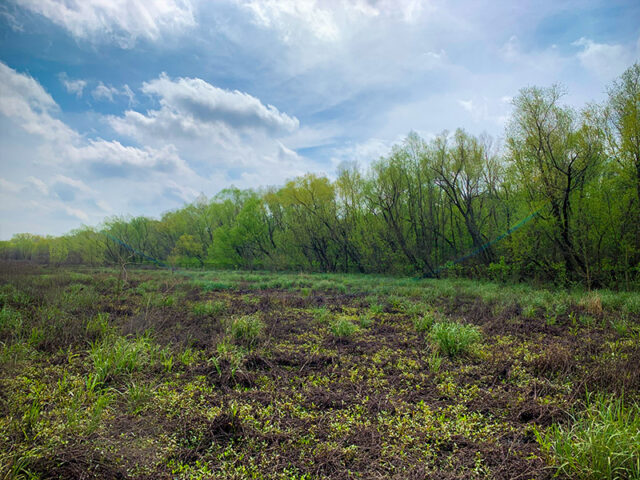
you can see a straight line drawn across the base of the tree line illustrating the depth
of the flood waters at the time of the last Trinity River overbanking

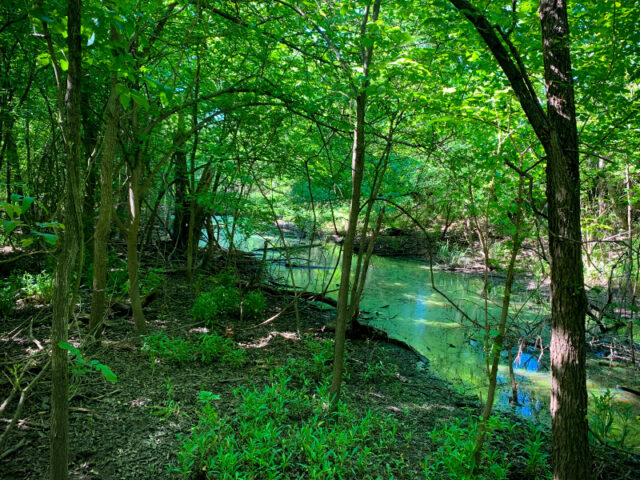
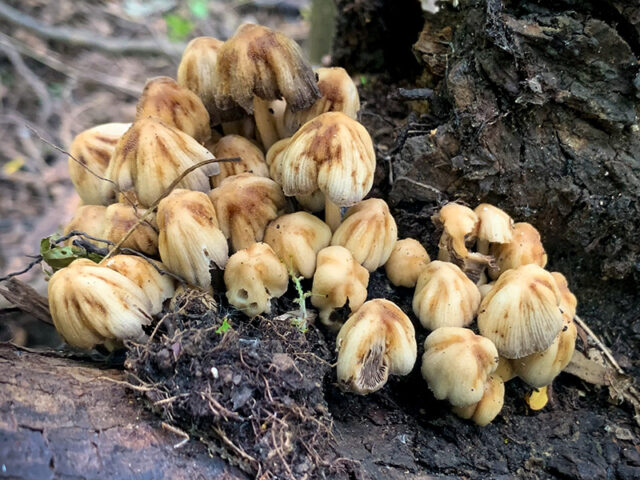

And finally, one quick note before we begin… I will be using some composite photographs in this article in order to do things like better illustrate the relative sizes of different species of urban wildlife. I will be sure to notate the images that have been created in Photoshop and include a description of the nature of the manipulation.
Location One
This location was perhaps the busiest of the four we surveyed. Feral Hogs were especially fond of this area, and they made many repeat visits. Individual animals soon became recognizable due to the frequency of their appearances.
On a couple of occasions we recorded pictures of the rarely seen, deep-woods Swamp Rabbit. Characterized by its notable large size, the Swamp Rabbit is a species of cottontail found in the boggy reaches of bottomland forests. These rabbits are substantially larger than the Eastern Cottontails which frequents suburbia–the species of cottontail most of us are familiar with. Otherwise Eastern Cottontails and the Swamp Rabbits look superficially very similar, and without something in the picture to set scale, it can be challenging to make the case for one over the other. Fortunately, during this camera set we recorded enough different wildlife occupying the same spot to be able to determine the size of the rabbits we photographed with a high degree of confidence.
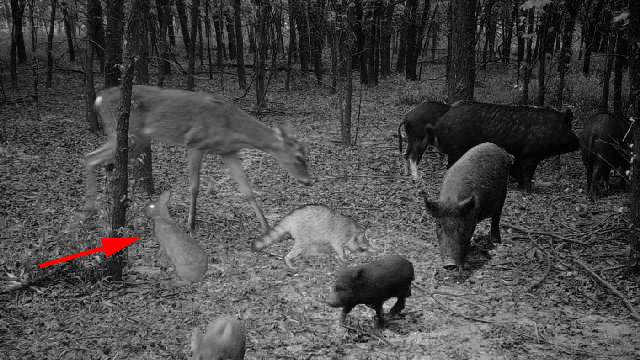
Swamp Rabbit (red arrow) compared to other forest animals.
Note the rabbit’s large size
The large size of the rabbits we photographed was the first clue we were dealing with something different. And when we returned to the site to collect our cameras we turned up additional supporting evidence. Swamp Rabbits have the unusual habit of pooping on deadfalls. If you find a pile of rabbit pellets on an old log in a swampy area , that is a sure sign that Swamp Rabbits are present.
LOS ANGELES TIMES: When Nature Calls, Swamp Rabbit Experts Want to Know
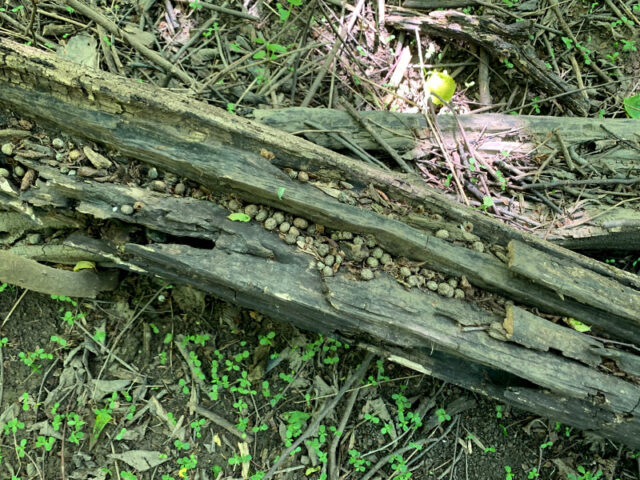


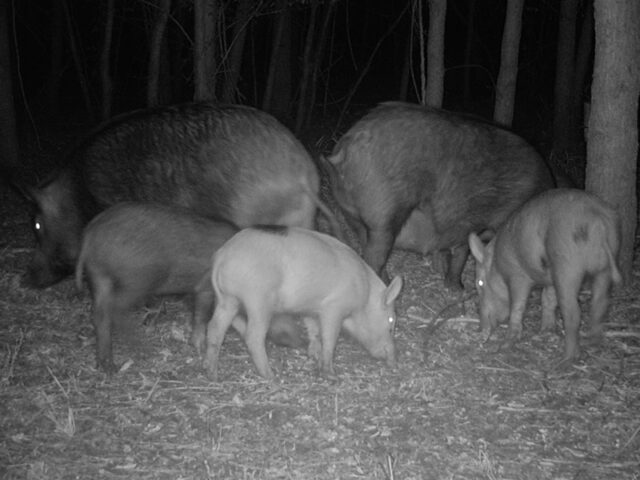
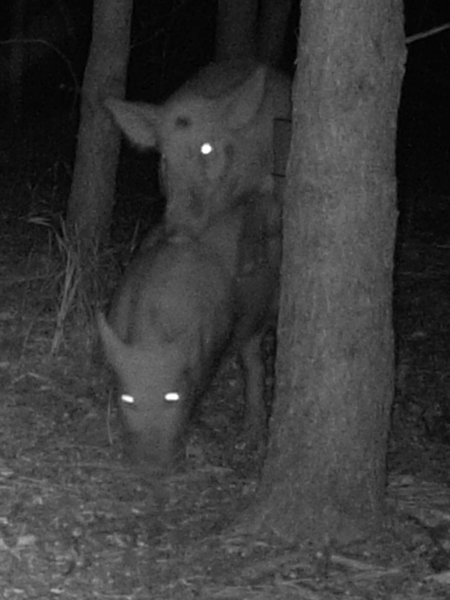
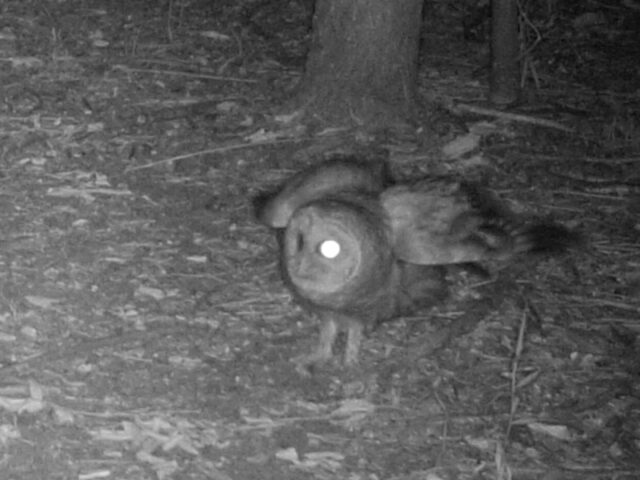
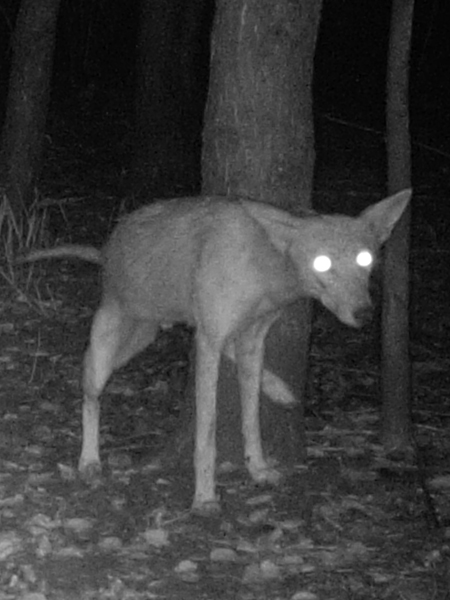


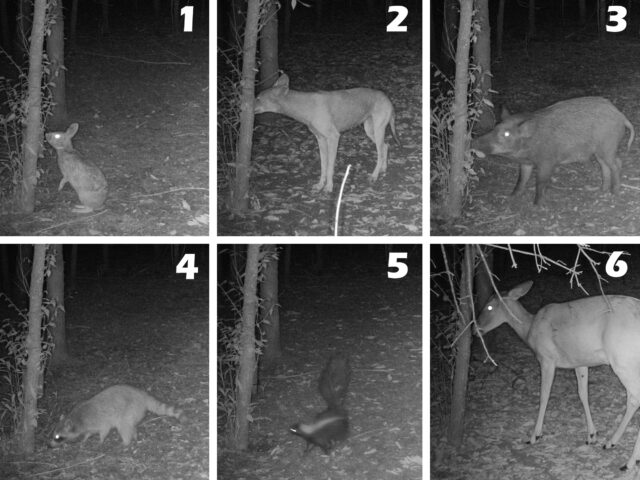
1) Swamp Rabbit 2) Coyote in summer coat 3) Juvenile Feral Hog
4) Raccoon 5) Striped Skunk 6) White-tailed Deer Doe
Click to Enlarge
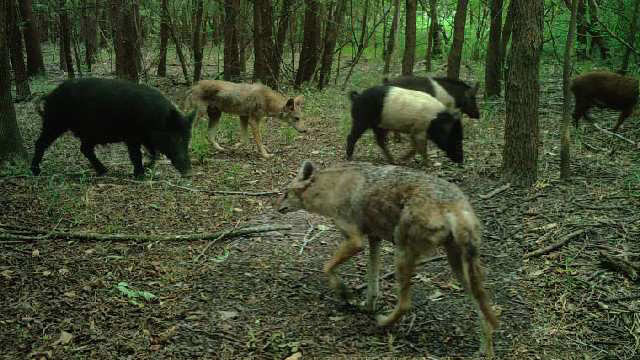

These two have molted their head feathers–not a good look!
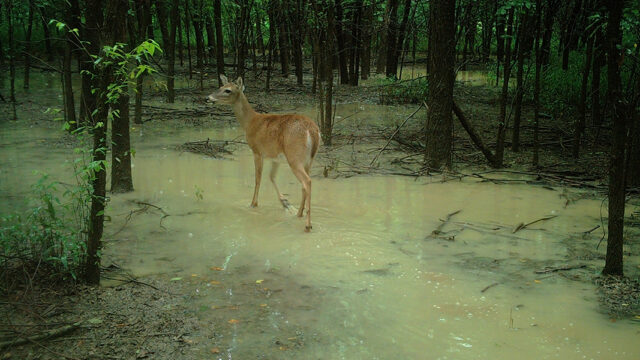
Location Two
Our second camera set was place in a habitat very similar to that of our first camera trap–new growth woods just off the centerline of the old lake bed. The animals here were very similar in type and count as those at the previous cameras set, and indeed, many of the same critters made appearances at both locations.
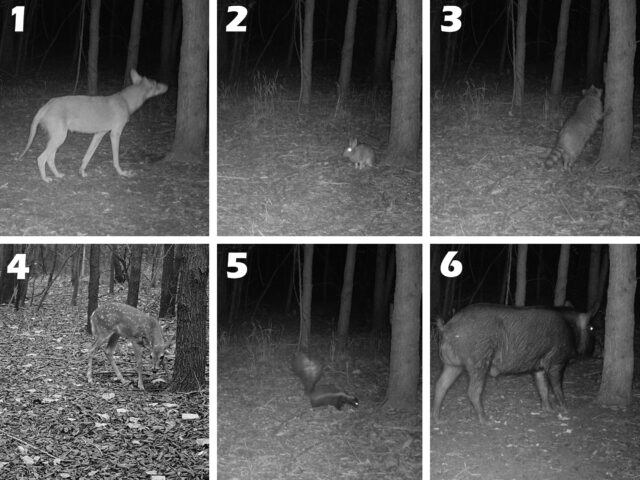
4) White-tailed Deer Fawn 5) Striped Skunk 6) Feral Hog Boar
Click to Enlarge
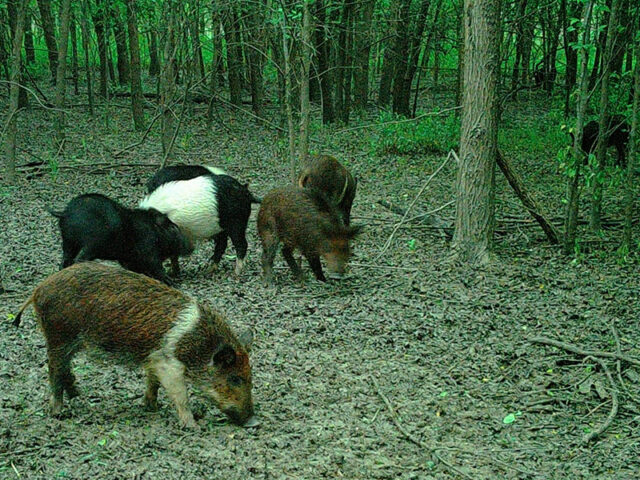
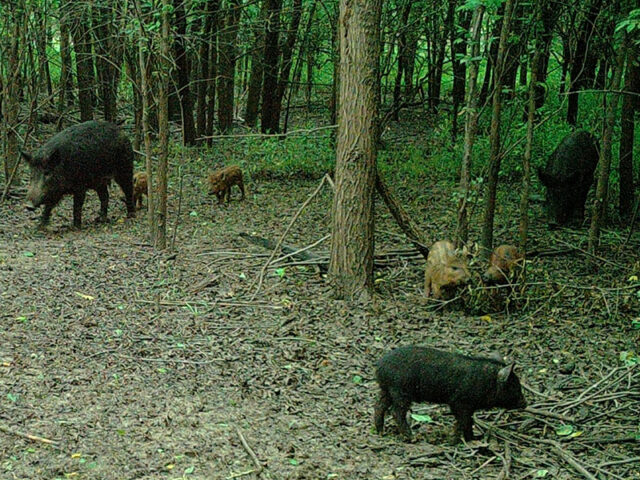

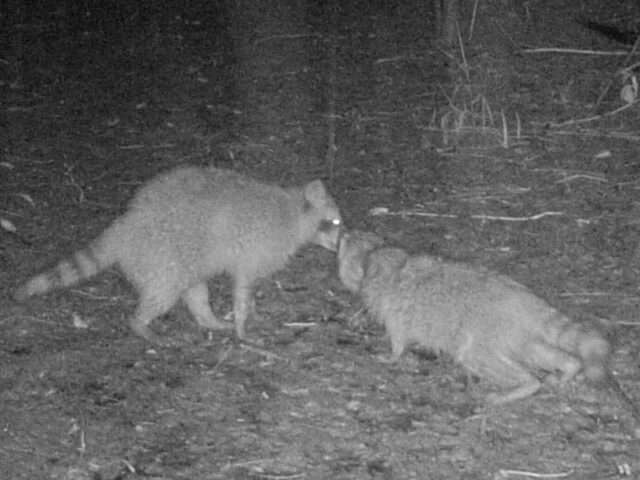
Here a pair engage in some horse play

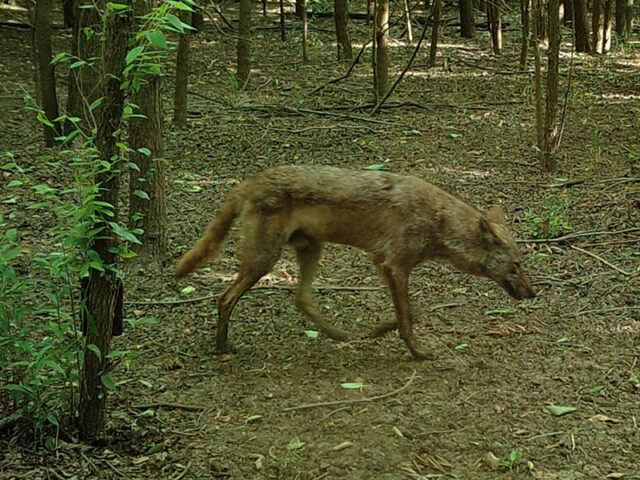

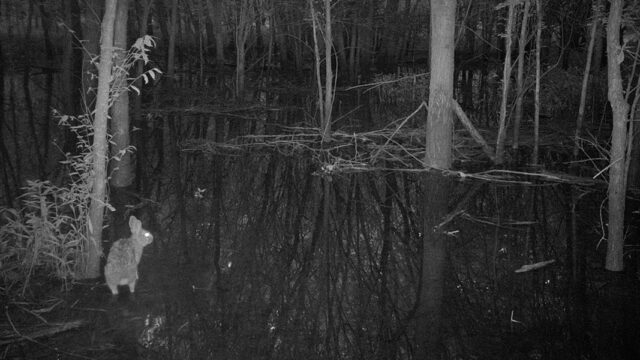
The rabbit in this photo did not let the flood waters deter him from reaching
one of his favorite spots in the woods
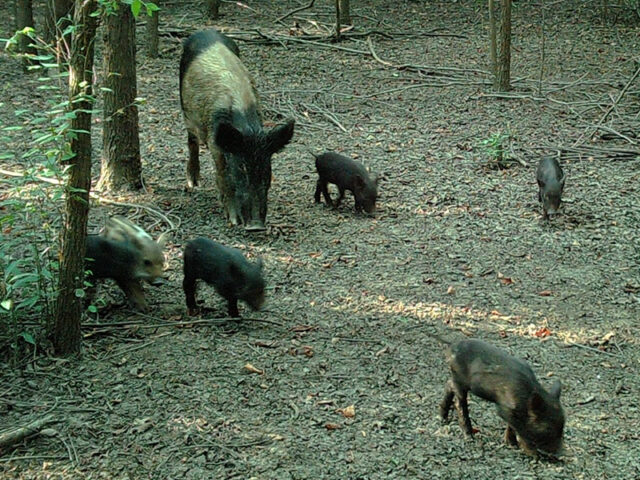
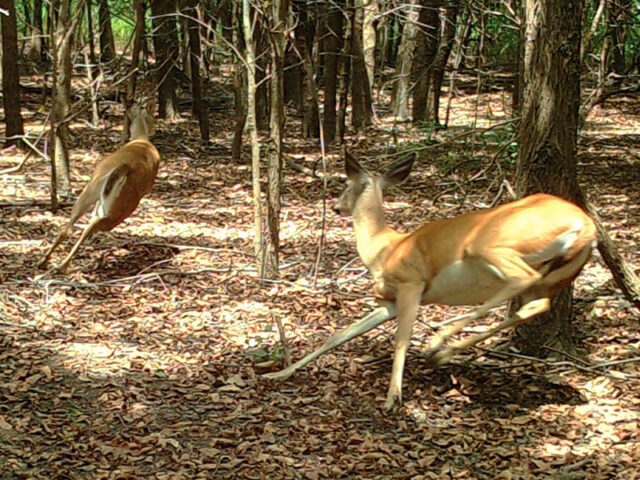

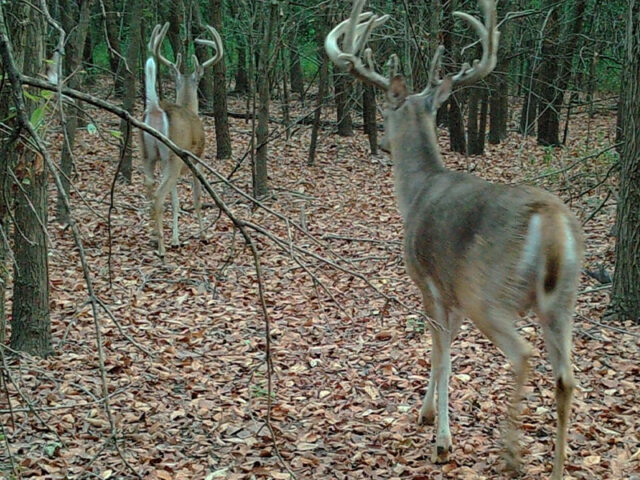


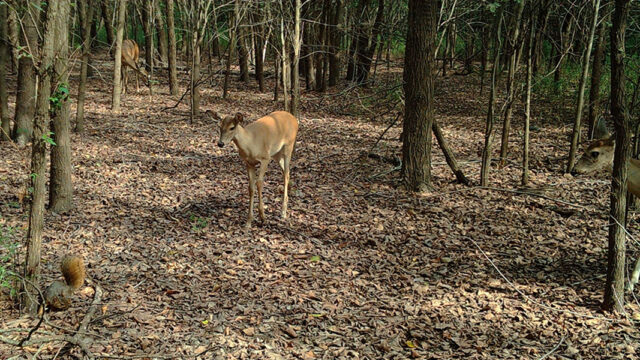

Location Three
We setup our third camera trap on the opposite side of the old lake bed. The ground was lower here, and when flood waters came in the spring, the water level rose substantially. And again there were plenty of animals passing through–many of which had been spotted earlier at the previous two camera sets. We even had a couple of stray domestic animals triggers the camera here, which is somewhat surprising since there are very few homes nearby.
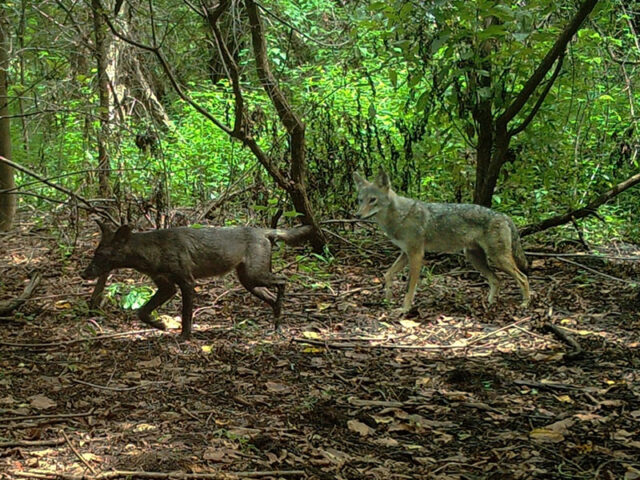
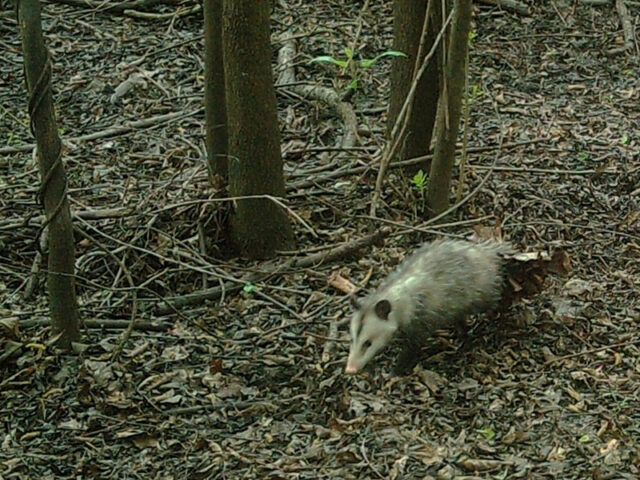
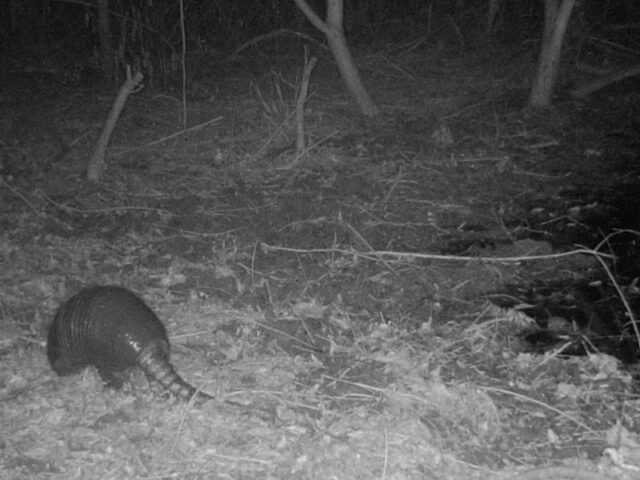

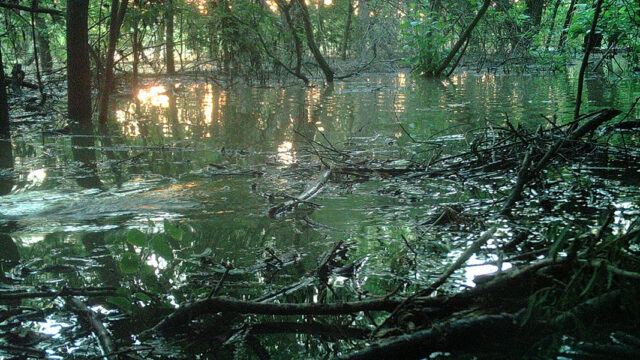
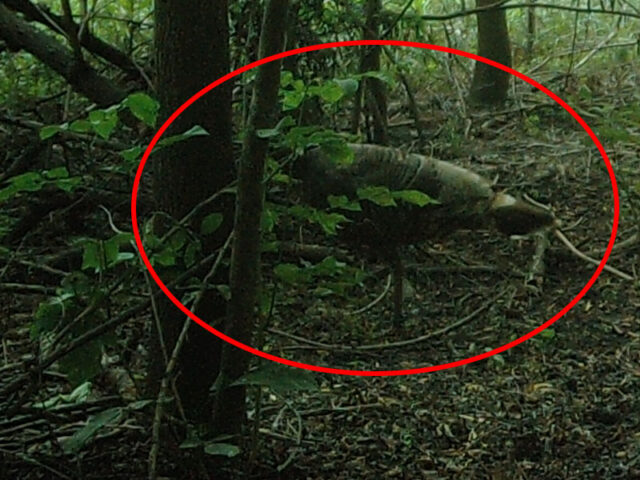
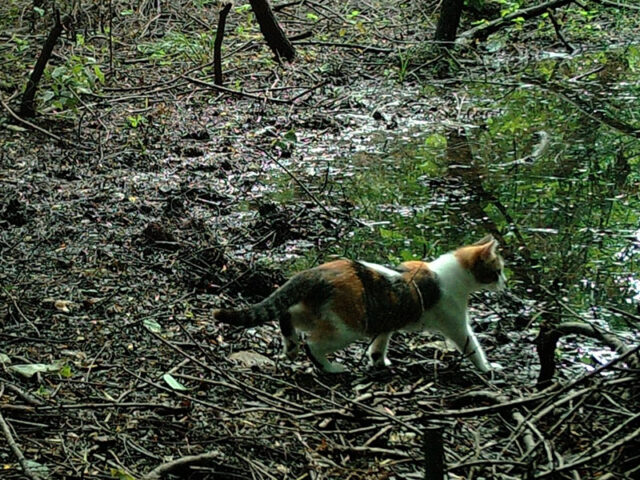
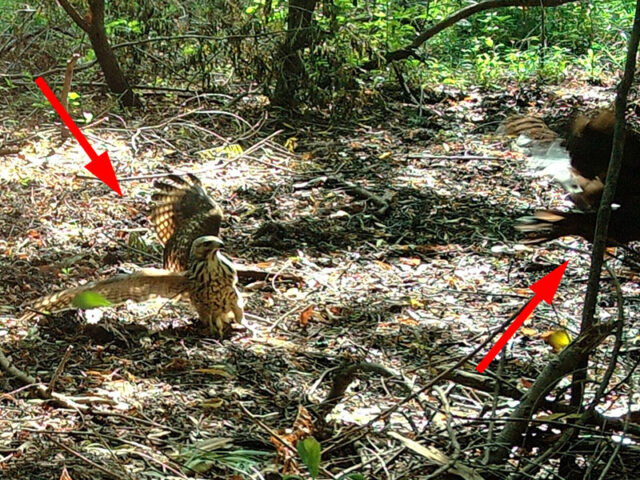
narrowly missing the bird it was hunting (right arrow)

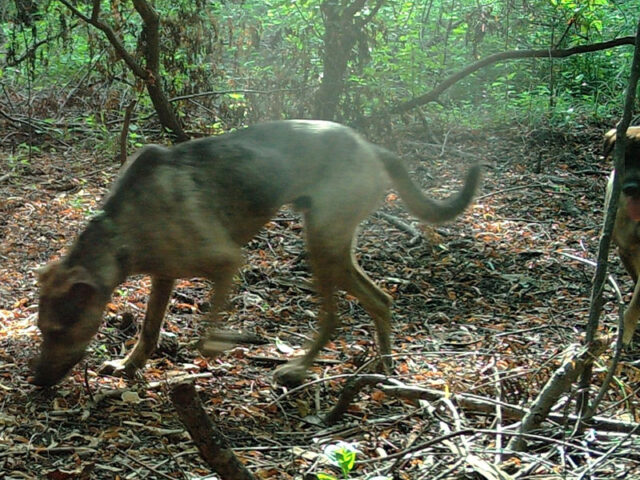
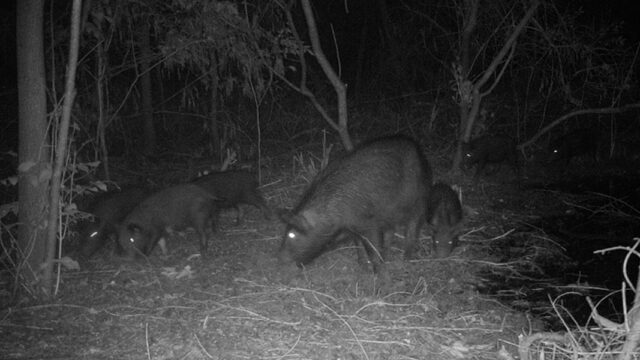
Location Four
Location four was very similar to location three in terms of flora and fauna. It was also equally prone to flooding. See below for a selection of photos from this place in the woods…
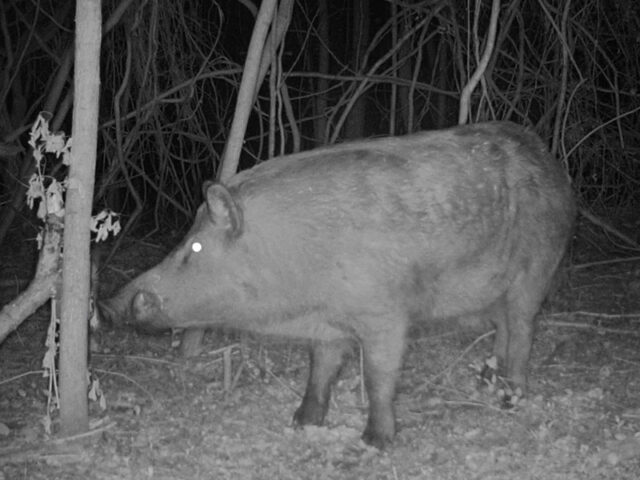
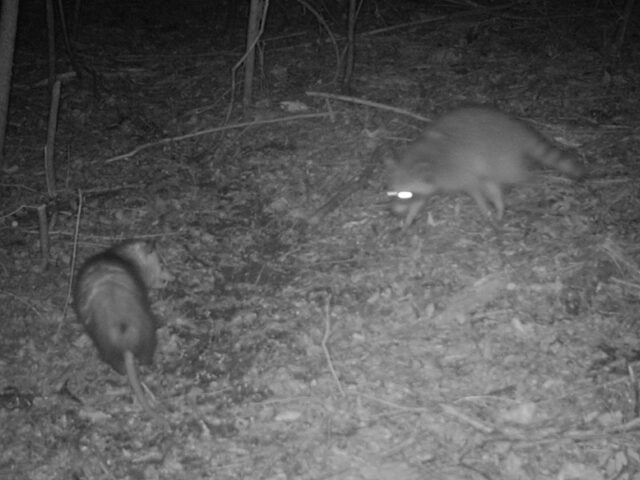





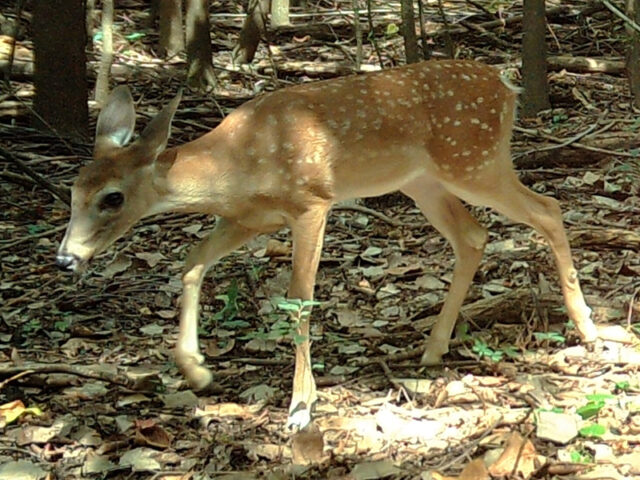

Comprehensive List
In all four set locations Feral Hogs were the dominate lifeform. They visited the sites most frequently and in the greatest numbers. Close behind the hogs were Raccoons. These masked critters are so resourceful and adaptable that their populations are strong and healthy just about anywhere you choose to look in the Dallas/Fort Worth metroplex. Other small mammal seen frequently during this project were Virginia Opossums, Nine-banded Armadillos, Striped Skunks, Eastern Cottontails, and Fox Squirrels–all in the expected numbers. White-tailed Deer were infrequently seen early on, but began appearing more often as the summer came to a close. The primary avian representatives were American Crows. Except for a smattering of various songbirds, crows were the only birds that could be counted on to make multiple daily appearances–which they did in front of all four camera sets. Below you can find a comprehensive list of all urban wildlife species documented in the Great Trinity Forest during this project…
- American Crow
- Barred Owl
- Bobcat
- Cooper’s Hawk
- Coyote
- Domestic Dog
- Eastern Cottontail
- Feral Hog
- Fox Squirrel
- House Cat
- Nine-banded Armadillo
- Raccoon
- Red-shouldered Hawk
- Swamp Rabbit
- White-tailed Deer
- Wild Turkey
- Yellow-crowned Night Heron


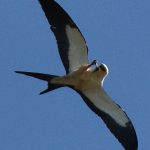

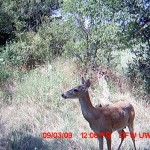
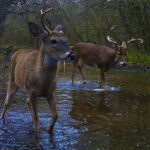

That is a truly impressive rack on that one buck!